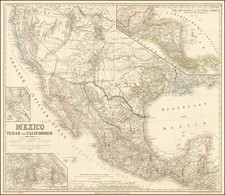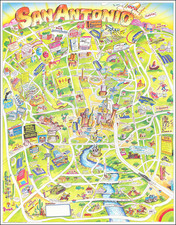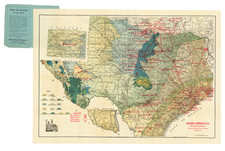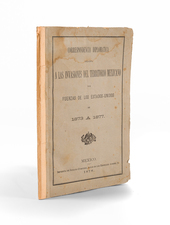The Second Example Traced.
The Only 19th-Century View of Bastrop, Texas.
Augustus Koch's 1887 depiction of Bastrop, Texas offers a detailed aerial perspective of what was one of the state's key settlements at that time. The systematic grid showcases orderly buildings, wide streets, and green spaces. The winding Colorado River contrasts the structured town layout, marking the town's boundary. Key landmarks like the Court House, Academy, Episcopal Church, M.E. Church, Roman Catholic Church, and the Masonic Temple are prominently illustrated, highlighting Bastrop's administrative, educational, and spiritual centers. Surrounding rolling hills frame the town, with scattered settlements hinting at an agrarian backdrop. This piece effectively captures Bastrop's late 19th-century essence, blending its agricultural roots with urban growth.
History of Bastrop
Bastrop, Texas, flourished in the 19th century as a pivotal point of civilization amidst the vast, untamed frontier of early Texas. Established in 1832, Bastrop’s roots trace back to its founding by Stephen F. Austin, who named it "Mina" in honor of a Mexican revolutionary hero. However, it was later renamed Bastrop, after the Dutch engineer, Baron de Bastrop, who played a significant role in the settlement of Texas. In the mid-1800s, Bastrop became a vital center for trade, agriculture, and commerce, with its strategic location near the Colorado River ensuring its prosperity. The city was noted for its abundant production of timber, cotton, and corn, which were transported via the iconic steamboats of that era. Despite facing adversities such as Native American raids, floods, and fires, Bastrop exhibited resilience and growth, embodying the unwavering spirit of the pioneers who called it home.
Rarity
Reps (3949) locates a single example at Bastrop County Historical Society Museum, Bastrop, Texas.
Augustus Koch (1840-?) was one of the most prolific American engravers of Birds Eye Views working outside of the major publishing centers. Koch initially served in the Union Army during the Civil War as a clerk and draughtsman in the Engineers Office in St. Louis. Although his English was poor, he was later commissioned as an officer and assigned to one of the Black regiments serving in Mississippi where he drew maps for the advancing Union forces. By 1865 he is thought to have contracted malaria and at 25, was discharged from the army.
By 1868, Koch had become an itinerant Bird's Eye View engraver. His earliest dated views are of Cedar Falls, Vinton, and Waterloo, Iowa. At that point his career seemed to take off and in rapid succession, maps by Koch were produced in every section of the country. In 1870 he produced 5 maps in Utah, Wyoming and California. In all, Koch produced over 100 views, including over 20 Texas Views, during a career of 30 years. His last recorded view was produced in Montana in 1898.
Reps notes that while Koch engraved fewer views than some of his contemporaries, "no American viewmaker traveled more widely in search of subjects. . . "














